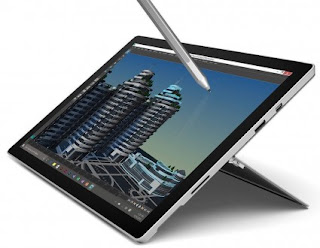When shopping for a tablet, screen size is one of the few factors that could complicate the whole process. Do you go small, medium, or large? We recommend that you pick a size that matches the task at hand. Buy a tablet that will allow you to do what you want to do effectively and conveniently. Here’s how to decide;
7 Inches
 |
Apple iPad Mini 4 (7-inch) |
Devices in this range are small and lightweight. They can easily fit into some pockets, in most purses, and in bags. They are also the most affordable with a majority priced in the $100 range.
Their light-weight design makes them a great pick for reading e-books and checking emails. Additionally, if you’re looking for a tablet that can double up as a phone, a 7-Inch device would work extremely well.
The small screens are however not very ideal for playing computer games, watching long movies, or running productivity software such as spreadsheets and word processors. In addition, these low-cost devices come with slow processors which could seriously slow you down.
8 Inches
Dell Venue 7840
8-Inchers try to offer the best of both worlds. The devices are small enough to comfortably fit in most purses and a few jacket pockets, but larger screens mean you can run some productivity software on the tablets. Prices here range widely. But in general, be prepared to spend between $150 and $300.
Of course, with the larger screen, reading becomes easier than if you were using a 7-Inch tablet. That’s why 8-inch tablets are common with e-book readers. The larger screen also means you can try a few games on these tablets. Even word processing becomes a little easier.
However, the one inch jump in size adds some weight. This, plus the fact the devices are large, means carrying them around isn’t as easy as with 7-inch tablets.
9 Inches
Now we’re entering the “big size” zone. Here portability becomes one of the last advantages as screen real estate takes center stage. In other words, if you’re buying a tablet in this range, you should be focusing on what the larger screen would get you first before talking about portability. Fortunately, prices for device in this category don’t differ much from those of 8-inch tablets.
With regards to performance, 9-inch tablets come with better specs. The processing power is stronger, memory is larger, and even the graphics is better. This means you can run spreadsheets and play most games on a 9-inch tablet without any impediments.
On the flip side, however, you can forget about carrying your tab in your back pocket. In fact, you need to purchase a separate bag for the device.
10 Inches
For the best experience, 10-inch tablets are often the best choice. They offer everything you may want in a tablet – portability, power, and beauty. But be prepared to spend up to $500 on one.
In addition to being outstanding at basic tablet tasks, 10-inchers are excellent at video and most of them can capably handle computer games. They are also great at productivity and corporate applications, making them the go-to devices for business travelers.
Carrying them around is not very easy though. It requires nearly the same commitment you’d need when carrying a laptop. Since the devices just won’t fit in a purse, you’ll need to carry them in a backpack, briefcase, or gadget bag.
12 Inches
Lastly, 12-inch tablets are the largest tablets you’ll find in the market currently. They are also the most powerful and most pricey. A typical 12-inch tablet costs upwards of $800 while others, especially from Apple, cost well over $1,000.
But they easily handle the full range of tasks you’d want to do on a computer. Whether it’s watching a movie, online shopping, browsing the internet, or editing photos, a 12-inch tablet will handle the job without signs of choking.
These large tablets are also easier to type on thanks to the fact that they use split screen keyboards. Some of them even come with external keyboards that you can attach to the tablet and use just like a desktop keyboard.
To carry them around, however, you need a laptop bag, backpack, or briefcase.
What Now?
Armed with this information, we hope that you can now make an informed choice on your next tablet purchase.




Comments
Post a Comment